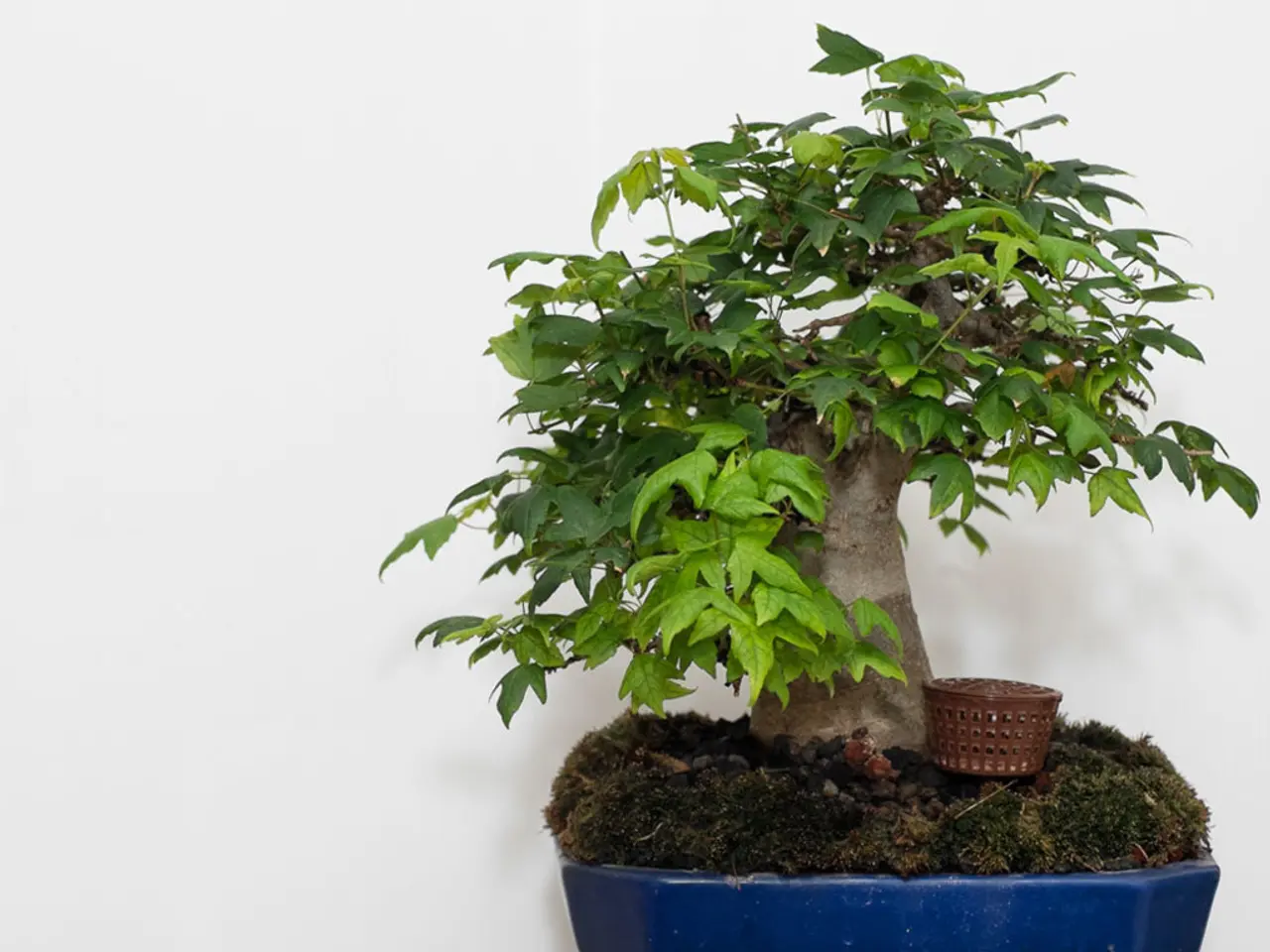Innovative Bonsai Stone Sharpening: Investigating Fresh Materials and Technology
In the world of bonsai, the art of maintaining sharp tools is paramount. The latest innovations in bonsai sharpening stones and techniques are focusing on improving material quality, ease of use, and more precise sharpening workflows.
One significant development is the use of grease-based pastes on sharpening stones. Applying products like Chemico coarse/fine on sharpening plates helps prevent tool "skating," improves abrasion control, reduces pressure needed, and notably avoids rusting problems common with diamond stones. This approach enhances the sharpening experience by providing better stone-to-tool contact and longevity of the stone.
Another key advancement is the creation of high-quality whetstones tailored to bonsai tools. These stones enable fine, precise edges essential for detailed pruning, making them invaluable for bonsai enthusiasts.
Traditional leaders such as Fuchioka continue to refine abrasive materials to optimize the essence of cutting, grinding, polishing, and sharpening, combining traditional craftsmanship with material innovation.
Japanese carbon steel bonsai scissors and shears, known for their sharpness and durability, are also becoming easier to sharpen using standard whetstones or diamond plates. This simplifies maintenance for practitioners.
Recommendations now include careful blade angle management when sharpening and cutting, using appropriate parts of the blade for heavier cuts, and regular blade treatment with oils like camellia oil to maintain sharpness and prevent rust.
As we stand at the threshold of this new era, we are filled with excitement and anticipation, knowing that the future of bonsai sharpening technology holds the key to revealing new levels of precision, creativity, and mastery.
The future of bonsai sharpening technology holds immense promise, with emerging innovations poised to revolutionize the art of achieving a superior cutting edge. Advanced materials, nanotechnology, and artificial intelligence are likely to give rise to sharpening systems that are not only more efficient but also more intelligent.
High-quality sharpening stones can be used for various gardening and woodworking tools, extending their lifespan and enhancing overall performance, making them a valuable investment for any green thumb or craftsman.
When sharpening bonsai tools, it's essential to employ techniques that safeguard against chipping, cracking, and overheating. Regular maintenance, such as inspecting the blade for signs of damage and adjusting sharpening techniques accordingly, is necessary for peak results.
For left-handed bonsai enthusiasts, many sharpening stones are ambidextrous, allowing for comfortable use regardless of handedness. Guided sharpening jigs or fixtures also guarantee consistent sharpening angles and prevent accidental deviations.
To maintain your sharpening stones, regularly wash them with soap and water to remove metal particles and debris, dry them thoroughly to prevent water spots and mineral deposits, store them in a dry, cool place away from direct sunlight, and reflatten them periodically to maintain their even surface and prevent uneven wear.
In conclusion, the harmonious union of tool and tree will forever be dependent on the cutting edge of sharpening technology. The unique edge bevel requirements of various bonsai tools impact the sharpening process and ultimately influence the tool's overall performance and longevity. Determining the ideal sharpening approach for bonsai tools hinges on understanding the distinct properties and requirements of various steel types. Cooling systems or frequent cleaning with a damp cloth prevent overheating and reduce the risk of blade damage. The nuances of blade angle can profoundly impact the performance of bonsai tools.
In the realm of technology, the development of advanced materials for sharpening stones is set to redefine the future of gardening and woodworking tools, potentially incorporating nanotechnology and artificial intelligence for more efficient and intelligent systems.
The world of finance might find significance in the long-term investment value of high-quality sharpening stones, which can extend the lifespan and enhance the performance of various tools, benefiting both hobbyists and professionals alike.
Technology, finance, and science intertwine as we increasingly understand and harness the potential of innovative sharpening systems to bring forth new levels of precision, creativity, and mastery in the art of bonsai and beyond.




